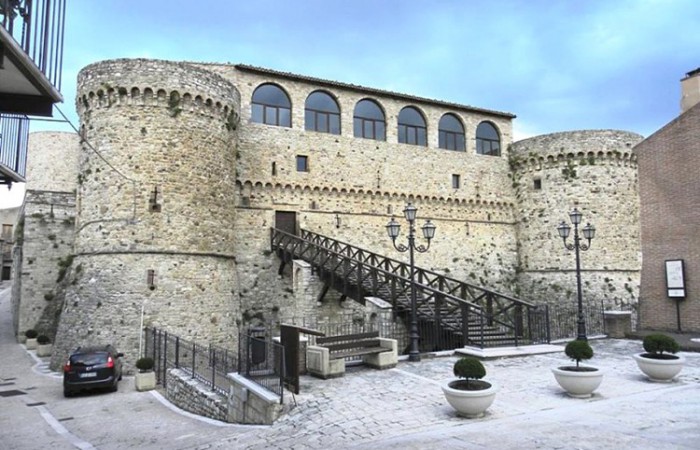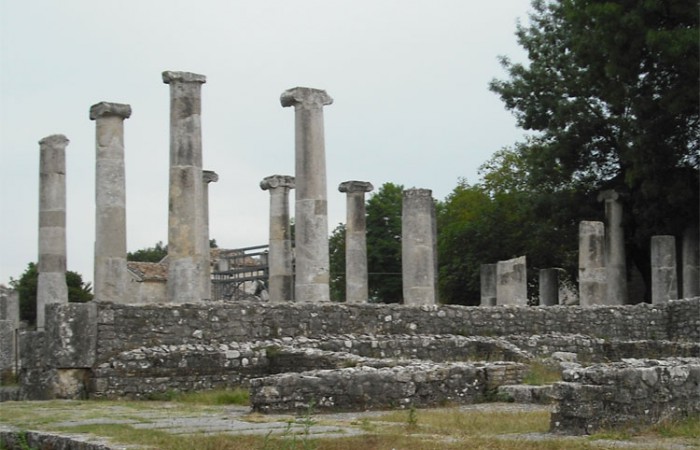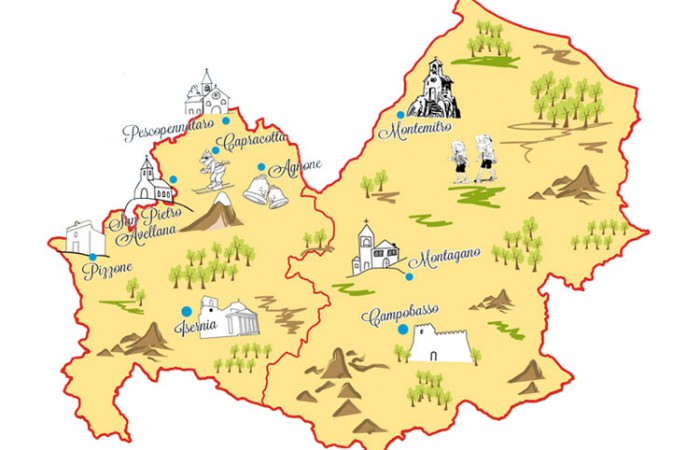 Despite the region being officially founded in 1963 (making it one of the youngest Italian regions), history in Molise marks its roots from the prehistoric era. Towards the end of the 1970s, in La Pineta (situated close to Isernia), artifacts were found dating the Paleolitico age about 7,000,000 AC, belonging to hunters that roamed the area.
Despite the region being officially founded in 1963 (making it one of the youngest Italian regions), history in Molise marks its roots from the prehistoric era. Towards the end of the 1970s, in La Pineta (situated close to Isernia), artifacts were found dating the Paleolitico age about 7,000,000 AC, belonging to hunters that roamed the area.
One of the youngest Italian region, officially established in 1963 although its roots are back in Prehistoric era. Towards the end of the 1970s at La Pineta in Isernia, Paleolithic remains were found. They are date back to 730,000 years ago. Not less important are also remains from Roman age like Altilia of Sepino and the theater/temple of Pietrabbondante.
The Romans also seemed to have interest in the civilization living in Molise at their time. Different tribes existed in the territory, at the time part of the Samnite empire. At the beginning of Rome age, Vaenafrum, Bovianum, Larinum, and Aesernia already existed. Remains from the Roman time period include the Altilia of Sepino and the theater/temple of Pietrabbondante.
Throughout the Medieval Ages, Molise was the heart of the dukedom of Benevento. Even though this subordination did not allow the region to develop autonomously, it encouraged the construction of many castles, especially during the XII and XVIII centuries. Many of these castles remain today.
The main castles of Molise are:
- Castle Monforte of Campobasso
- Castle Pandone of Venafro
- Castle Pignatelli of Monteroduni
- Civita of Bojano
- Castle Sanfelice of Bagnoli of Trigno
- Castle Caldora
- Castle Svevo of Termoli
During the domination of Benevento, monasteries dedicated to the Benedictine sect prospered. For example, the abbey of San Vincenzo, was built in the VIII century and became one of the most important monasteries in Europe.
Under the Sicily Kingdom, Molise obtained independence in the XVIII century then become a region of autonomy. With the unification of Italy, Molise was merged into Abruzzo.
At the beginning of the XX century, Molise saw a huge decrease in population because of the many youths who immigrated out of Molise to the Americas (U.S.A., Canada, Argentina, Brasil) in search for work.
In the last phases of World War II, Molise paid a great deal of damages because of its proximity to the Gustav line. One example was the bombing of the city of Isernia by the Allies, who were intent on attacking the German troops even though they had already retreated. Because of this, the city of Isernia was awarded a Gold Medal in Valor Civile. The recovery in the 1960s proved to be slow because of the huge migrations to northern regions (Switzerland, Germany) until Molise was recognized for its identity in 1963, when it was recognized as the twentieth region in Italy. In 1970, the parliament of the Italian Republic joined the province of Isernia with Campobasso, forming the region of Molise.
https://aroundmolise.com/en/discovery/history.html#sigProIdc6374f28f6













